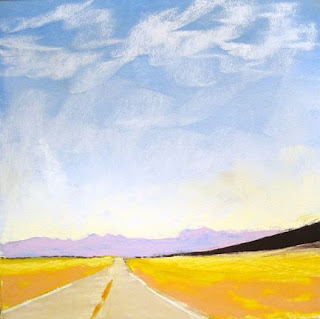 |
| 20-stroke sky |
This experiment is designed to help you make fresh, lively paintings using a few well-chosen and carefully placed strokes. Where in the previous chapter,
Limit Time and Palette, you moved fast, here you may actually slow down a little and take time to find the most effective and efficient strokes you can use. You’ll find simpler colors, use somewhat larger, gestural strokes, and overlap them to create an impression of detail, while limiting the number of strokes you use. The idea is to see how few strokes you can use to make a painting that effectively expresses a place.
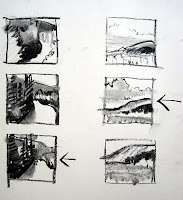 |
| thumbnail sketches |
Begin with a few thumbnail sketches to sort out the major shapes. Keep these simple and fast, which will allow your brain to see shapes without regard to what the object is. Your eye and hand have the ability to see and record these things more accurately than you think, almost independently of your will. Do more than one thumbnail. Start with a credit card-sized box and do a quick drawing of what you actually see in your photograph. Then begin to move in closer, remove objects, rearrange them or add to the shapes to make an interesting composition. It’s simpler to stick to three values, dark, medium and light (which is usually the paper), although you might use medium-dark and medium-light values, too. As you refine the thumbnail, think about how you could make use of strokes to create the shapes.
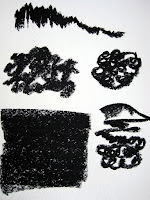 |
| only one stroke each |
Let’s talk about what constitutes one stroke in pastel. Unlike an oil painter, your brush won’t run out of paint as you drag it across the paper. You can make some very lengthy and intricate strokes. Count each stroke from the moment you touch the paper to the point at which you lift your pastel stick. You might lay a stick flat on the paper and drag it over the entire area of the sky, using a back and forth motion to fill it in. If you have distant mountains, that same stroke might be lightly incorporated there as an under-color. A jagged stroke might simulate a line of trees or grasses across the entire span of the paper, while a continuous curlicue could create foliage or the undergrowth on a distant hillside. One stroke could serve several purposes as you vary the pressure on the stick. Use a big zigzag shape, or a huge swoop that curls and curves back and forth. It could go on for quite a while, so eke the best out of each stroke. You could conceivably paint half the piece in one well-conceived and executed stroke if working on a small sheet of paper. For our purposes, count using your finger to blend a passage or a Colour Shaper™ to brush pastel around like paint as one stroke.
I recommend preparing a smaller sheet of paper and doing a very simple line drawing to locate the major shapes. Think carefully about what needs to go down first. Paint what lies behind before painting what’s in front of it. Paint through objects, varying pressure where the sky passes behind trees or other items bisect space. Utilize some of the lovely habits of pastel, sometimes making a thick, impasto stroke to obscure what’s below, or a soft dry-brush stroke that allows color to glow from beneath. Think about how you can create color modifications using careful layers and different kinds of strokes.
Don’t try to make every nuance of color, highlight or shade. Distill the colors to essentials, modifying them where most useful to express the scene you’re painting. Choose the most vital shadows or highlights. Decide where smaller strokes will be necessary and most informative, and use them judiciously to draw the eye to the area of interest.
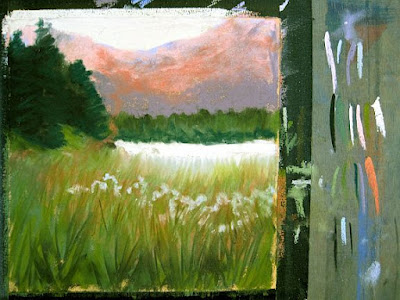 |
| Painting in progress with hash marks to one side. |
Keep a record of your strokes, limiting yourself to only 20. It’s probably simplest to make hash marks alongside your painting. You may find your paintings too rudimentary to start with, but in time you’ll find there’s a charming elegance to these simple little pieces. Paint a series of smaller images using 20 strokes. Later, if you desire, increase the stroke count to 30 or 40, and analyze how that changes your paintings.
Take the time to find strokes that work together to create the impression you seek. Go slowly, thinking through how you will structure the piece. In searching for the essential stroke you may find that you honestly don’t need to use more strokes. You only need to use better ones.
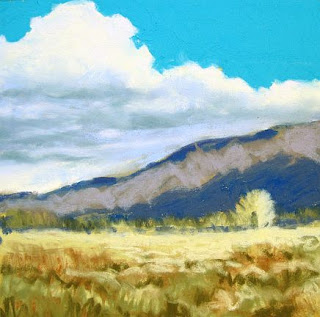 |
| 20 stroke Sandia |










No comments:
Post a Comment